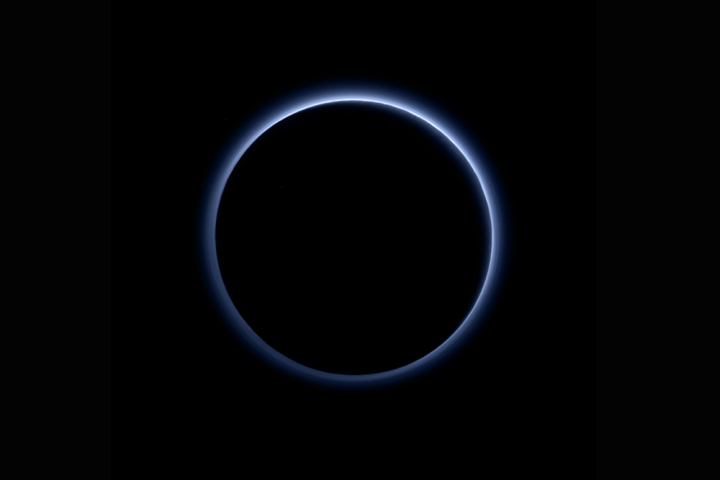
Just this past July, NASA’s New Horizons probe accomplished a nearly 10-year mission to reach (and pass) the dwarf planet Pluto. In the months since its passing, NASA has released a steady stream of information pertaining to Pluto though Thursday’s announcement arguably bears the most fruit. Though there aren’t giant areas of the planet which exhibit patches of the water ice New Horizons detected, the discovery still represents one of the most significant findings in our solar system.
“Large expanses of Pluto don’t show exposed water ice,” Southwest Research Institute science team member Jason Cook says in NASA’s press release, “because it’s apparently masked by other, more volatile ices across most of the planet. Understanding why water appears exactly where it does, and not in other places, is a challenge that we are digging into.”
One aspect of the findings particularly stumping the team is how the water-rich areas appear in spots which were recently seen in New Horizons photos as bright red. Silvia Protopapa, a science team member from the University of Maryland, said this discovery surprised the team and admitted they don’t yet understand the correlation between water ice and the surface of Pluto’s reddish tholin colorants.
The researchers do, however, believe the tholin particles native to the planet are responsible for the blue haze seen surrounding the planet. Similar to how the scattering of sunlight by very small nitrogen molecules on Earth produces a blue sky, the team believes the soot-like tholin particles create Pluto’s blue color. To do this, the particles form high in Pluto’s atmosphere and react with one another to produce complex negatively and positively charged ions. After ultraviolet sunlight divides and ionizes nitrogen and methane molecules, the tholin reacts with one another to create complex macromolecules.
“That striking blue tint tells us about the size and composition of the haze particles,” science team researcher Carly Howett says. “A blue sky often results from scattering of sunlight by very small particles. On Earth, those particles are very tiny nitrogen molecules. On Pluto they appear to be larger — but still relatively small — soot-like particles we call tholins.”
As the tholins in Pluto’s atmosphere get bigger, they continue to combine with one another to create larger particles. Volatile gasses then coat these larger particles with ice frost before they descend through the atmosphere and onto Pluto’s surface. It’s once these particles reach the surface of Pluto, the scientists estimate, that they contribute to the red coloring seen in regions of the planet.
NASA’s discovery of water on Pluto is yet another incredible accomplishment for the Washington D.C.-based space agency. As it continues to find traces of water on planets both near and far from Earth, an answer to the question of “Does alien life exist?” seems just on the horizon.
Editors' Recommendations
- These 3 companies are developing NASA’s new moon vehicle
- A NASA cat video in deep space just did something very special
- Meet the new NASA communications system that’s hitching a ride in today’s Psyche launch
- NASA’s amazing Mars helicopter just set a new flight record
- NASA reveals new date for Crew-7 mission to space station




